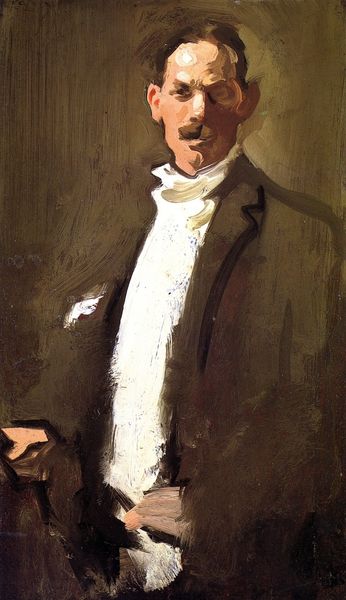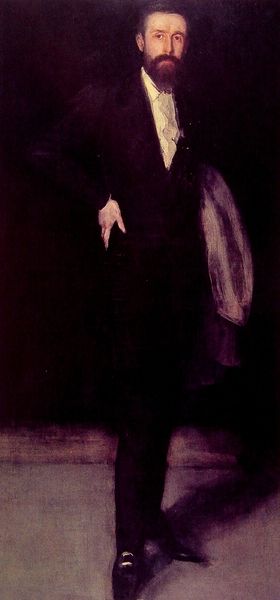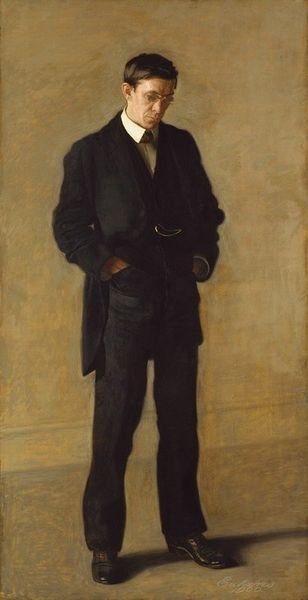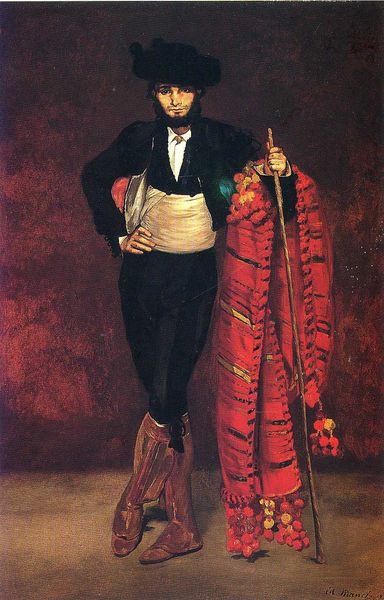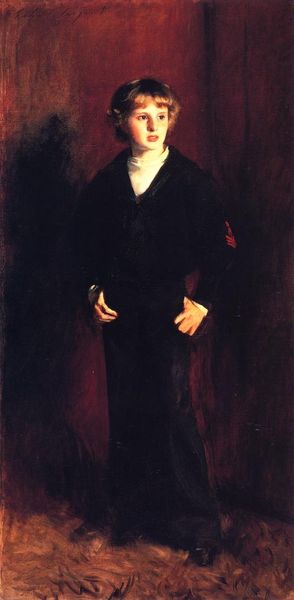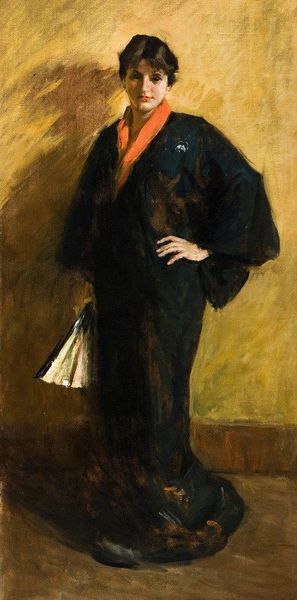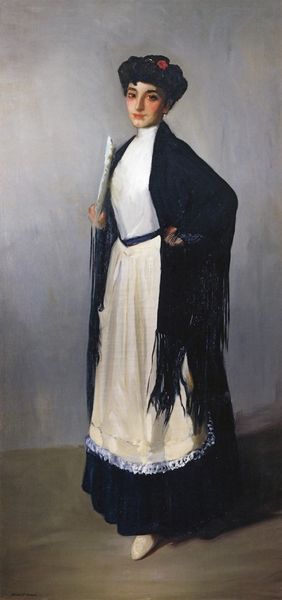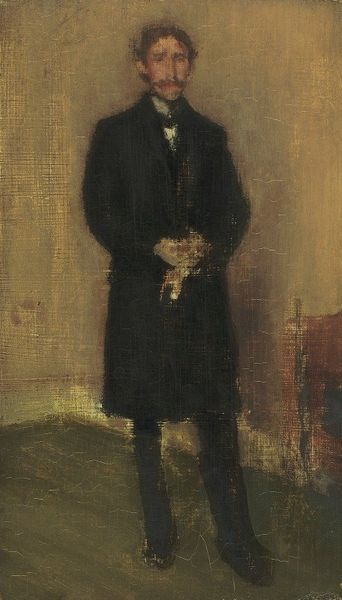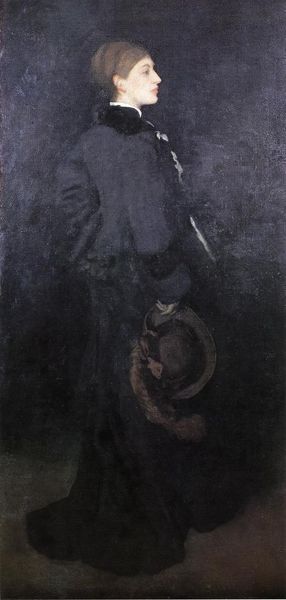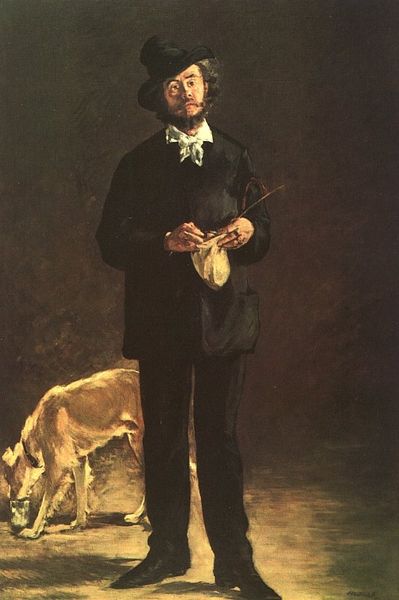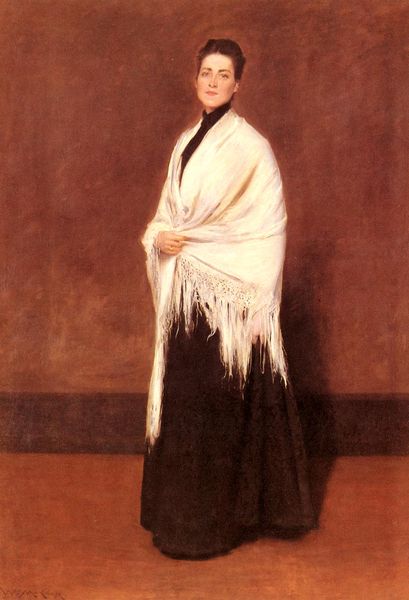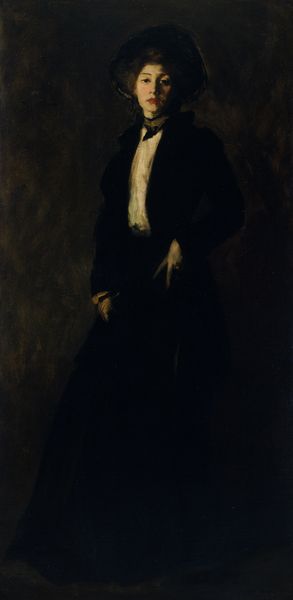
Arrangement in Light Pink and Black: Portrait of Théodore Duret 1883
0:00
0:00
painting, oil-paint
#
portrait
#
narrative-art
#
painting
#
impressionism
#
oil-paint
#
modernism
Dimensions: 193.5 x 91 cm
Copyright: Public domain
Curator: James McNeill Whistler's "Arrangement in Light Pink and Black: Portrait of Théodore Duret," painted in 1883, is a fascinating study in both personality and painterly technique. Editor: My first impression is of subdued elegance. The color palette is restrained, and the figure seems almost…staged. Like he's aware of being observed. Curator: Absolutely. Whistler wasn't just capturing a likeness; he was crafting an image, one deeply rooted in the aesthetics of the time and the societal role of portraiture. Théodore Duret, as a prominent art critic and champion of Impressionism, certainly understood the implications of his own representation. Editor: Look at how the oil paint itself is applied though – so thin, almost translucent in places. Especially in the rendering of the white shawl, with just hints of pink and grey woven in, it speaks to the luxury of the materials depicted, the production of high end commodities. Curator: Indeed, Whistler was less concerned with precise detail and more with achieving a harmonious composition. It reflects the Japonisme influence popular at the time, seen in the flattened perspective and focus on tonal balance. Editor: Do you think the fan is supposed to be a nod to the East, or simply a fashion item, a manufactured adornment for his hands? It draws attention to Duret’s position within the consumer market, even something seemingly so delicate as a fan speaks volumes. Curator: Possibly both! Whistler used such objects to reinforce an aura of cultivated taste and refinement, crucial for navigating Parisian society. It's important to remember how artworks like this functioned within very specific circles and solidified reputations. Duret was, in a way, being publicly endorsed through this association with Whistler’s aesthetic project. Editor: Right, the fan in itself might be a mundane, commercial item, but Whistler has imbued it with far greater value and significance through this artistic depiction and Duret’s status. Whistler and Duret created social prestige and value through painting these fashionable but manufactured goods. Curator: Well, considering how this piece merges personality with larger social forces, it's far more than a simple record of appearance, don't you think? Editor: Agreed. Whistler's process and materials become part of this whole discussion on class, status, and societal presentation in late 19th century Paris.
Comments
No comments
Be the first to comment and join the conversation on the ultimate creative platform.
